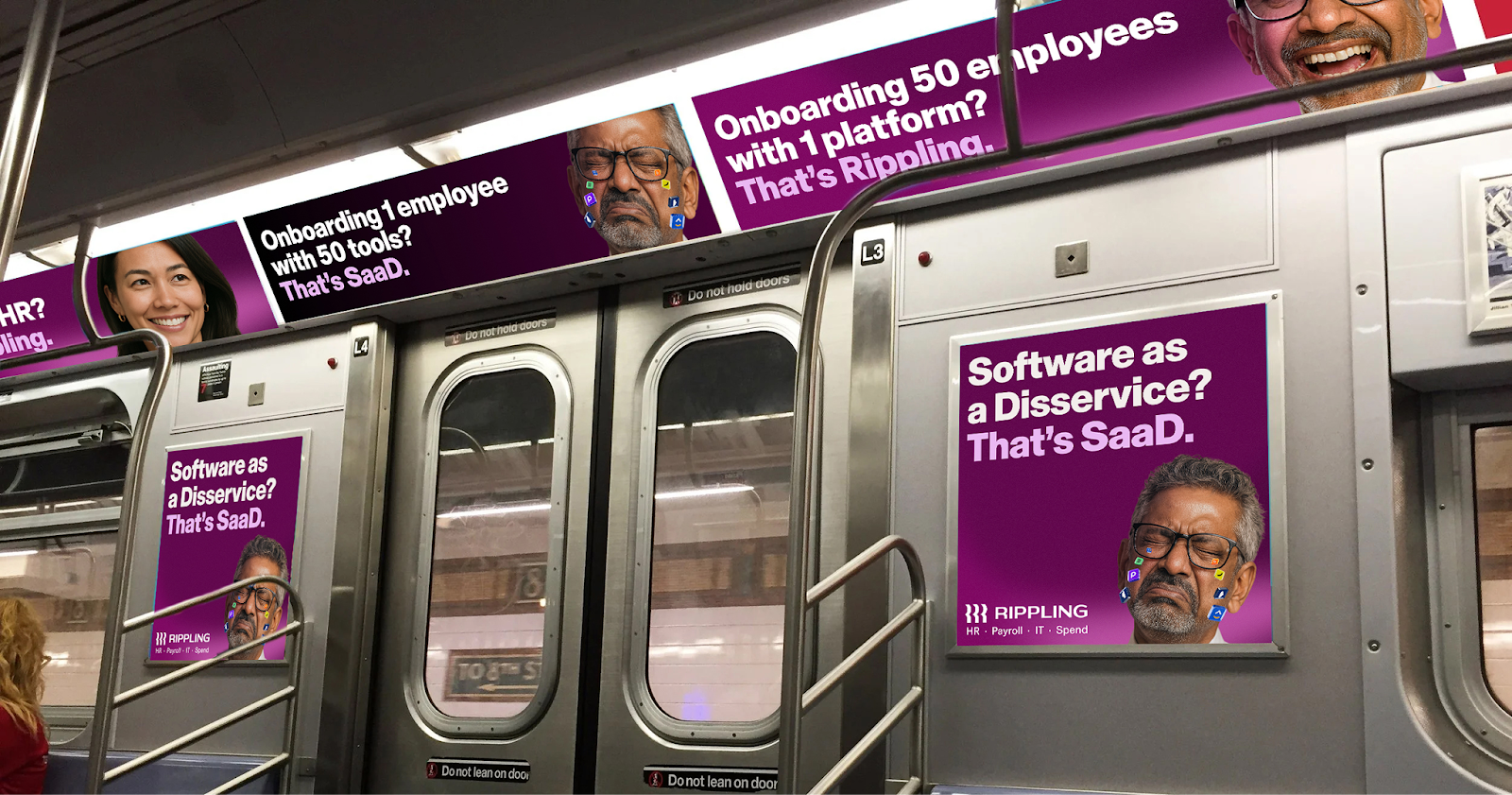SaaD is stopping companies in their tracks. We’re putting an end to it.

In this article
For years, companies have been promised that software would make work easier. Instead, most businesses are buried under it. In an effort to augment clunky, inflexible all‑in‑one suites, companies have adopted hundreds of disconnected SaaS tools across every department. Each solves a narrow problem, but together they create something worse: Software as a Disservice. SaaD for short.
When companies put up with SaaD, they don’t just slow down. They grind to a halt. Teams spend their days stitching systems together, exporting CSVs, and fixing faulty integrations. Budgets balloon with duplicate and unused licenses. Careers stall as smart people get stuck doing admin work. And leaders are forced to run their business on a patchwork of incomplete data.
That’s not just inefficiency. It’s a drag powerful enough to stop a business in its tracks. That’s why today, we’re putting a stake in the ground. SaaD has gone on long enough.
Definition: Software as a Disservice — business software that creates more pain than benefit. Built for departments instead of workflows, SaaD fragments data, multiplies manual work, inflates costs, and drags execution.
Synonyms: Execution Tax, Software Sprawl, Operational Drag, Soul-crushing Admin
How we got here
Not long ago, business software lived on-premise. Heavy, expensive systems like SAP or Oracle required armies of IT staff and endless upgrades. The “Software as a Service” (SaaS) revolution promised a clean break: simple cloud apps, always up to date, easy to adopt.
For a while, SaaS delivered on its promise. Departments could spin up tools in minutes. HR got payroll software, Finance got expense systems, IT got device management tools.
Each tool solved a narrow problem. But together, they create chaos. Workflows break whenever an integration fails. Employees juggle a dozen logins just to finish simple tasks. Data is scattered across apps that don’t talk. IT is forced to babysit fragile connectors and chase down shadow accounts. And leaders make decisions with blind spots big enough to cost millions.
Over the last decade, the number of SaaS tools per company exploded, from about 16 in 2017 to well over 100 today. The irony? The very software meant to make companies faster is now what slows them down.

The hidden cost of SaaD
Instead of helping you do your work, software is giving you homework. We call this the execution tax: wasted time, duplicate work, and missed opportunities. It shows up when:
Onboarding a new hire means manually updating payroll, benefits, device management, and expense systems one by one. Miss a step and someone starts without pay, without benefits, or without a laptop.
Finance spends weeks chasing receipts and reconciling spreadsheets because expense tools and ERP systems don’t sync. Closing the books becomes an all-hands fire drill.
HR drowns in checklists to offboard employees, disabling dozens of accounts, pulling final pay, and hoping nothing slips through the cracks. One missed step and you’re looking at a compliance nightmare.
IT wastes hours reassigning laptops, resetting passwords, and patching gaps across disconnected systems, work that should take seconds but instead slows every other team down.
Every department pays the price. And together, it compounds until companies lose speed, clarity, and control.

Rippling customers have left SaaD behind
Many companies have decided enough is enough. They’ve left SaaD behind by running on Rippling.
Rippling unifies HR, IT, Spend, and more on one platform with a shared source of truth: your employee data. Change something once — a new hire, a promotion, a termination — and it updates everywhere. Global hiring, payroll, benefits, app access, device provisioning, spend policies. You can even build custom applications that support your most bespoke business processes, right on Rippling. No bottlenecks. No re-entry. No silos.
Barry’s and Forterra replaced multiple systems with Rippling. Instead of errors and hand-offs between disconnected systems, they gained speed, visibility, and an employee experience that scaled.
Red Clay built a custom application with App Studio to track, renew, and budget for all its global visa and work authorization needs from a single source of truth.
Pepsi of Worcester closed their books 7x faster with 100% compliance.
Maui Oil consolidated outdated IT systems, automating provisioning and securing devices instantly. Now, one person can manage IT for hundreds of employees.
These aren’t small wins. They’re examples of companies regaining clarity, momentum, and leverage by breaking free from SaaD.
It’s time to move on from SaaD
AI is reshaping how companies work. But AI built on siloed tools can only see a fragment of your business. It might summarize an interview or categorize expenses, but it can’t act with full context. That’s SaaD, too.
AI built on a unified platform is different. It sees across HR, IT, and Finance. It can answer complex questions with accuracy, connect the dots leaders can’t see, and even take action, like hiring, provisioning, and reporting, all without manual handoffs.
That’s only possible with a unified system of record. And that’s what Rippling was built for from day one.
Companies that replace sprawl with a single system will be the ones that grow faster, adapt quicker, and win in the age of AI.
Don’t get SaaD. Get Rippling.
Disclaimer
Rippling and its affiliates do not provide tax, accounting, or legal advice. This material has been prepared for informational purposes only, and is not intended to provide or be relied on for tax, accounting, or legal advice. You should consult your own tax, accounting, and legal advisors before engaging in any related activities or transactions.
Hubs
Author
The Rippling Team
Global HR, IT, and Finance know-how directly from the Rippling team.
Explore more
See Rippling in action
Increase savings, automate busy work, and make better decisions by managing HR, IT, and Finance in one place.




















































































































![[Blog – SEO Image] HR General](http://images.ctfassets.net/k0itp0ir7ty4/5HLyf8smIeVXBQR3yGShjK/37e6a47e8af5dfc448d5e7cce835b4f7/Header_HR_General__1_.jpg)
